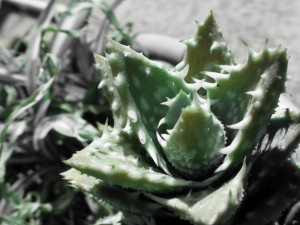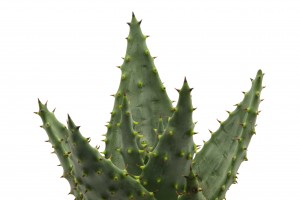If you use aloe vera gel, juice or any other form of the plant, you undoubtedly have experienced the many benefits of this miracle plant. For many people, the next step is your own growing aloe vera plant. While this won’t meet all your gel and juicing needs, growing your own is a great way to learn about caring for and preparing you aloe vera plant.

Here are a few pointers to help get you started on your own growing aloe vera plant.
Miracle plant, aloe vera (Aloe barbadensis) is one of the simpler house plants to grow if you have a less-than-green thumb. It’s also versatile in that you can grow the plant indoors situated on a kitchen windowsill or in the garden if you live in a very warm and dry climate.
Growing Aloe Vera Plant Indoors
Warmth and sunlight are keys to a growing aloe vera plant, so give them bright light indoors and partial shade when they
Here are The Different Varieties of Aloe That Can be Grown in your Home:
A. aristata Lace aloe: The small tight rosette of gray-green leaves is covered in tiny white spikes. Occasionally produces a spike of orange flowers.
A. variegata Partridge-breasted aloe: Overlapping V-shaped leaves form a tight rosette and are banded with white. A spike of orange-pink flowers may develop.
A. vera: This interesting plant is useful and easy to grow. In optimum growing conditions the loose rosette of very fleshy, gray-green, toothed leaves may produce a flower spike bearing dozens of tubular yellow flowers.
Growing Aloe Vera Plant Outside
If you live in a very warm climate, you can plant aloe in your garden following these additional guidelines from How Stuff Works:
Choose small to medium varieties and install them in rows, with each plant 18 to 24 inches apart. The plantings will expand into attractive large clumps within two to three years. Leave the earth bare around aloes to highlight their striking sculptural quality and regularly groom older clumps to keep offshoots from cluttering up the plant
Additional Growing Aloe Vera Plant Tips Include:
Position: Aloe requires a sunny position and a very well-drained soil.
Propagation: Aloe vera can be raised from seed, but it rarely sets seed in other than warm climates. Propagate it from offsets that form at the base of the plant. Allow these plantlets to dry for two days before planting them into small pots filled with a gritty, free-draining potting mix. Once they are well established, transfer them to their permanent position.
Maintenance: Aloe is affected by even light frosts, and in areas where winter temperatures fall below 41
Put Growing Aloe Vera Plant Magic to Work
The best part about aloe is its practicality! The plant can actually be used to heal scrapes, burns and other skin irritations. Use a knife to cut a leaf of the plant off at its thick base. Then use a spoon to scoop out the gel-like sap and apply it to the skin. – Source
Check out this video to see how people are making aloe vera plants work in different climates. You can maintain your plant with minimal care, especially if you live in warmer climates.

 Aloe vera is a succulent plant that has been revered for centuries. With many medicinal purposes, it is just a helpful today, despite the many synthetic and manmade products available on the market. From digestive relief to skin conditions, aloe vera has countless different topical and oral uses for humans. Here are just a few of the many aloe vera plant uses:
Aloe vera is a succulent plant that has been revered for centuries. With many medicinal purposes, it is just a helpful today, despite the many synthetic and manmade products available on the market. From digestive relief to skin conditions, aloe vera has countless different topical and oral uses for humans. Here are just a few of the many aloe vera plant uses:
